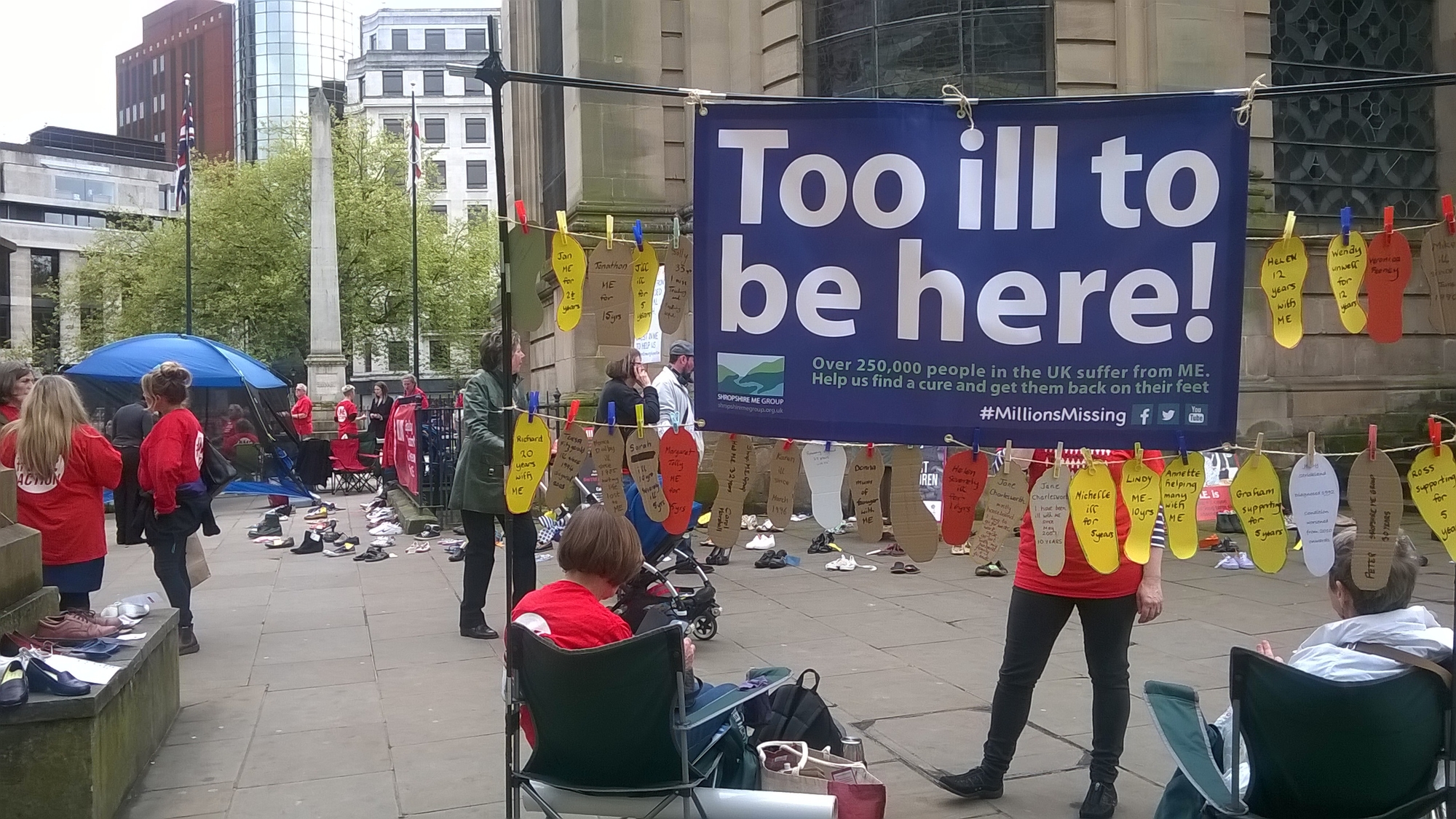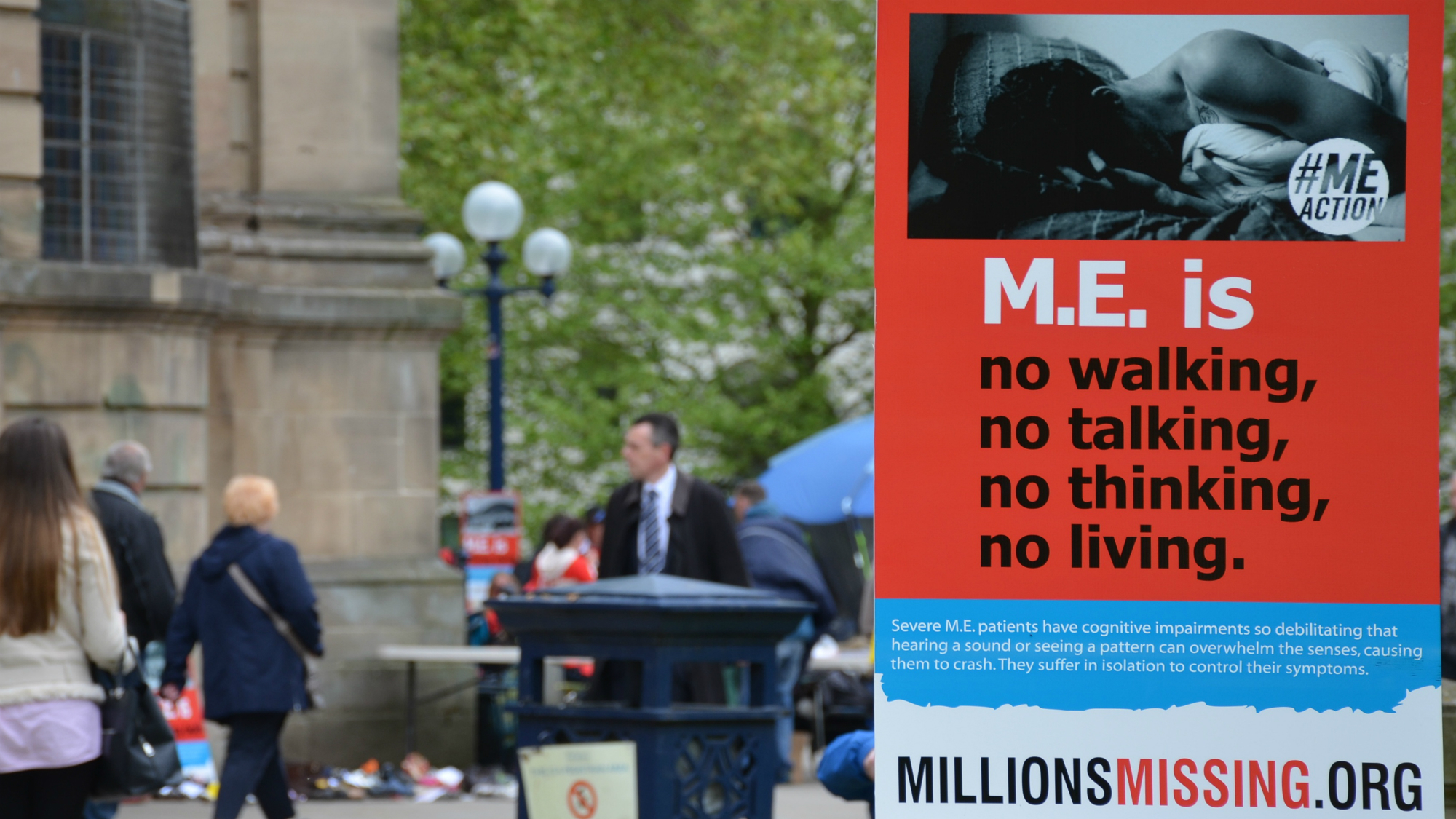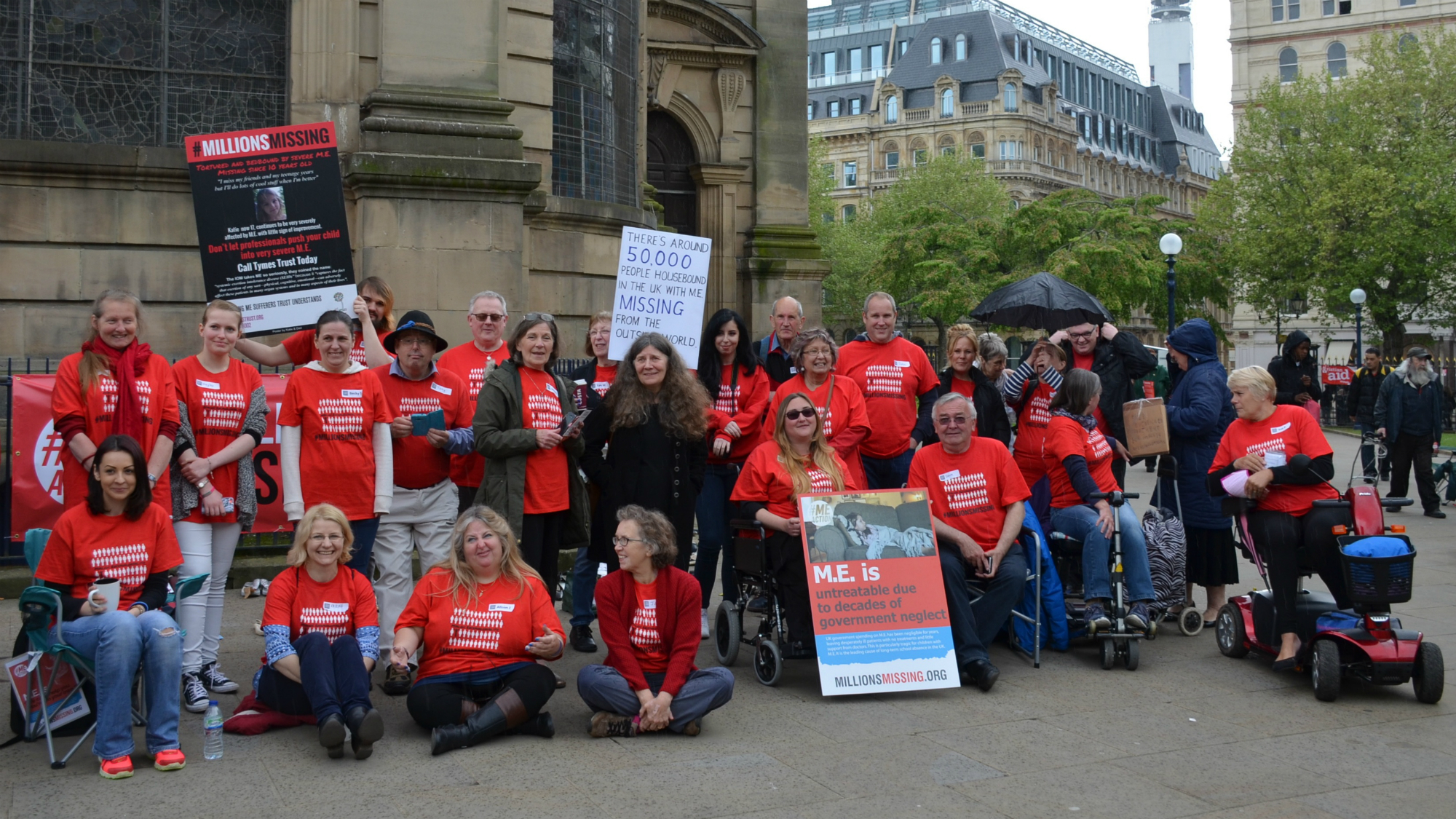The important reason why people are leaving shoes around cities
The #MillionsMissing campaign wants to give a voice to the thirty million people worldwide who suffer from ME

The #MillionsMissing campaign wants to give a voice to the thirty million people worldwide who suffer from ME
Words by Je Banach
If on May 12th, you find yourself out and about in Amsterdam, Boston, London, Chicago, Edinburgh, or one of approximately 95 other cities around the world, it is likely that you will encounter a plaza or other outdoor area populated with pairs of shoes. At first glance you may assume that you have stumbled upon the scene of some conceptual or performance art, but the uninhabited footwear is intended to catch the eye of passersby—and the world—as part of #MillionsMissing, a global campaign including a series of in-person and virtual advocacy events meant to call attention to the millions of people around the world suffering from myalgic encephalomyelitis.

The debilitating condition, also known as 'ME', causes pain, nausea, extreme sensory sensitivities, post-exertional malaise, and many other severe symptoms that leave the majority of those who suffer from it unable to work or resume the activities of their previous lives, and many more bedridden. The shoes represent those individuals who are unable to attend events in person due to the severity of their condition—people of varied age, gender, and race who often go unseen both literally, due to the restrictive nature of their symptoms, and figuratively, in terms of the lack of proper recognition and care they currently receive within the global medical community.
The campaign, initiated in 2016 by the ME Action Network, is intended to raise awareness, build community, and, most importantly, move governments around the world to assign proper and much-needed funding for research. While the condition affects a stunning fifteen to thirty million people worldwide and leaves its patients with a poorer quality of life than many of the more highly-funded conditions, funding for ME research remains woefully (some might say disgracefully) low. As a result, patients are forced to become their own activists and advocates while coping with the condition’s devastating symptoms.
Jennifer Brea, co-founder of the ME Action Network, directed an award-winning documentary about her own experiences with ME from her bed and advocates on a regular basis both in person and online. Jessica Taylor Bearman, a young woman featured in Brea’s documentary who has suffered from a severe form of ME since she was fifteen, maintains a blog that captures the reality and complexities of life with ME and recently published a book inspired by her own experiences titled A Girl Behind Dark Glasses. Anil van der Zee, a former professional ballet dancer with Introdans, Grand Théâtre de Genève, and Bern Ballet, forced into early retirement by the condition, created #art2CureME, inviting anyone to choose a song from Unrest that they can sing, dance to, or otherwise perform as able and share online in an effort to draw a larger audience to the film, to increase awareness and further educate the greater public.

Many doctors and researchers - such as Professor Ronald 'Ron' W. Davis, Director of the Stanford Genome Technology Center at Stanford University, whose son suffers from a severe manifestation of the disease - also perform regular advocacy work, which necessitates long hours and exhausting travel in addition to their regular daily work in the field. All share the goal of helping to shed light on a misunderstood and puzzling illness in order to create a public narrative that more closely approximates the real and devastating experience of life with this illness: a truer narrative that would almost certainly lead to adequate funding for research and, ultimately, a cure.
Celebrity news, beauty, fashion advice, and fascinating features, delivered straight to your inbox!
The #MillionsMissing campaign is only one example of coordinated events and action taking place during the month of May in order to bring attention to incurable chronic illnesses. The entire month has also been designated as an international awareness month for fibromyalgia (which shares an official awareness day with #MillionsMissing), Lyme disease, and other chronic immunological, neurological, and endocrine diseases. The overlap is a notable one. While advocacy and research efforts in these areas were previously compartmentalized, chronic illness patient-advocates are now, in greater numbers, helping to bring awareness not only to the condition or conditions from which they suffer, but to 'fraternal' and similarly misunderstood conditions—conditions that also lack sufficient funding for research.

Brea and others suggest that those suffering from ME as well as conditions including but not limited to chronic Lyme disease, fibromyalgia, Ehlers-Danlos Syndromes, MCAD, Endo, and POTS would benefit from uniting in their advocacy efforts. On Twitter, Brea recently shared a logo of a snake split into segments labeled with the names of several illnesses along with the phrase 'Join, or Die'—a visual that hits home the dire need for collaboration and cross-over among patients, doctors, researchers, and activists.
Open Medicine Foundation—comprised of a dedicated team of Nobel laureates, National Academy Science members, and medical dynamos led by clinical laboratory scientist and founder Linda Tannenbaum devoted to researching ME, fibromyalgia, and chronic Lyme disease—recently announced that they sense a meaningful shift taking place as public conversations about and more truthful media representations of these conditions increase. At the start of 2018, widespread public conversations around the release of Brea’s film Unrest combined with media attention and lobbying by academics and others allowed the ME epidemic to catch the eye of the philanthropist known as 'Pine' of The Pineapple Fund, who subsequently donated $5M to Open Medicine Foundation—proof that the correction of misleading narratives about these illnesses (such as the idea of ME as a basic “chronic fatigue syndrome” that only leaves one “tired”) and the dispelling of popular myths (like the notion that a disability must be 'visible' in order to be real) have a significant impact on progress, actually speeding increases in funding and improvements in care for those suffering.

Stories of the tireless activism of patient-advocates and others in the chronic illness community - perceived as 'inspiring' and “motivational' - are often spun into feel-good narratives about human will and empowerment presented for public consumption. In reality, their required activism is an immense burden that puts further strain on bodies already under attack. Advocacy work should not be left only to those who suffer and their families and caretakers.
Fundraising for research is an absolute necessity, but those unable to give can also help simply by participating in #ConversationsforCures - that is, any dialogue that helps to bring much-needed attention and awareness to these conditions and the suffering of those living with them. These conversations that will almost certainly lead to greater funding for research, a better quality of life for millions suffering around the world, and, quite possibly, cures.
The leading destination for fashion, beauty, shopping and finger-on-the-pulse views on the latest issues. Marie Claire's travel content helps you delight in discovering new destinations around the globe, offering a unique – and sometimes unchartered – travel experience. From new hotel openings to the destinations tipped to take over our travel calendars, this iconic name has it covered.